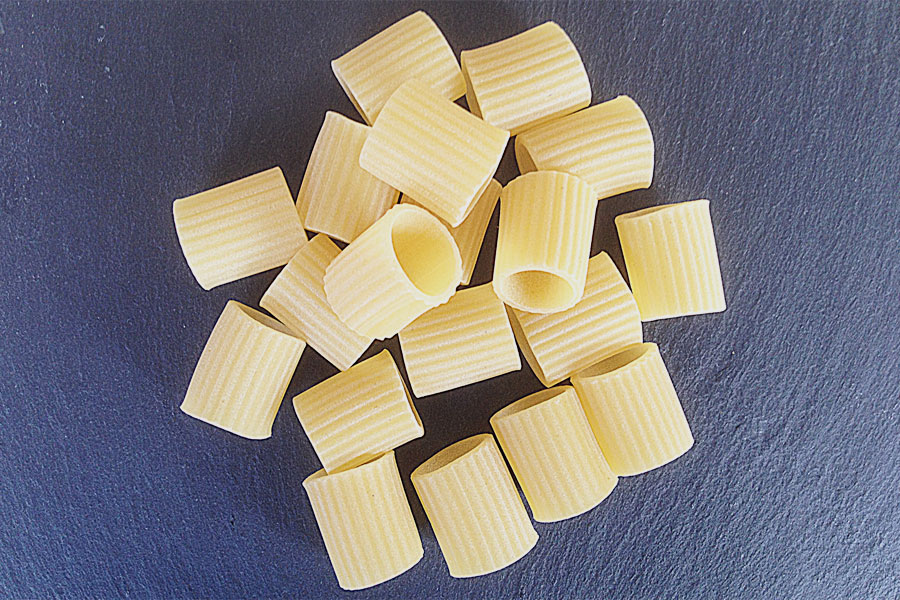Other Names:Rigatoni Mezzi |
Region: North-Central Italy, but widely used throughout Italy |
Made with: Semolina flour and water. |
About:Mezze Maniche” literally translates to “half sleeves” or “short sleeves” in Italian. This name aptly describes its appearance: it’s a short, wide, tubular pasta, essentially a shorter version of rigatoni it often features ridges (rigate) on its outer surface, which helps sauces cling to it. Some sources suggest the name might refers to “friar’s sleeves” or “monks’ sleeves,” drawing a connection to the short sleeves of garments worn by priests during the summer. This adds a charming, rustic touch to its identity. Origin and History: Mezze Maniche is believed to originate from While the exact historical document pinpointing its creation is difficult to find (as is often the case with many traditional pasta shapes), it has become a classic throughout the country. Evolution of Tubular Pastas: Mezze Maniche belongs to the large family of tubular pastas (like rigatoni, penne, paccheri). The development of these shapes was often driven by practicality: their hollow form and ridged surfaces are excellent for capturing and holding thick, chunky sauces, ensuring that every bite is full of flavor. Dies and Texture:Like many high-quality Italian pastas, Mezze Maniche is often extruded through This traditional process gives the pasta a rough, porous surface, which is ideal for sauce adherence. Widespread Use: While pasta in general has ancient roots in Italy, the widespread popularity and industrial production of specific dried pasta shapes like Mezze Maniche are more recent, gaining traction in the last few centuries. Characteristics and Uses: Shape: Short, wide, tubular, often with ridges (rigate). Due to its robust shape and often bronze-drawn surface, Mezze Maniche holds its “al dente” texture very well, even in baked dishes or pasta salads. Ideal Sauce Pairings: Its sturdy structure and sauce-grabbing ridges make it perfect for: |
||
Source:
|
Photo Credit: Bill Rubino
|
